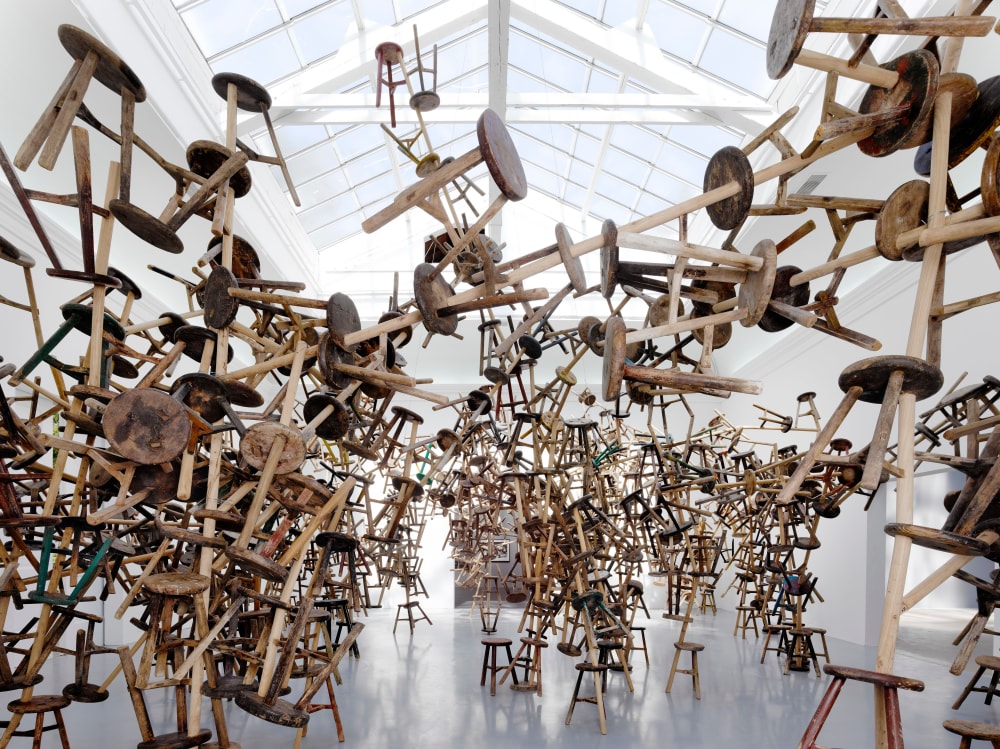
“After returning to Beijing from the U.S., where he had lived from 1981 until 1993, Ai Weiwei began to explore the artistic and cultural traditions of his native country – a pursuit that had previously been banned since the Cultural Revolution. He studied and collected antiques and eventually started integrating them into his own work, which had by then taken on a strongly conceptual aspect. Ai Weiwei not only examined the mechanisms of the international art and antiques markets and the associated export of cultural values and historical knowledge; he also reflected on the clash between old and new ideas about value as Chinese society underwent a process of rapid modernization. For his installation for the German representation at the French Pavilion, Ai Weiwei has assembled 886 three-legged wooden stools. In today’s China, the three-legged stool is an antique. Manufactured by a uniform method, it was in use throughout China and in all sectors of society for centuries. Every family had at least one stool, which served all sorts of domestic purposes and was passed on from generation to generation. After the Cultural Revolution, which began in 1966, and the subsequent modernization of the country, however, production of these stools plummeted. Aluminum and plastic have superseded wood as the standard material for furniture. Out of 886 of these stereotyped and yet highly individual objects, Ai Weiwei, recruiting traditional craftsmen who possess the necessary and now rare expertise, has created an expansive rhizomatic structure whose sprawling growth recalls the rampantly proliferating organisms of this world’s megacities. The single stool as part of an encompassing sculptural structure may be read as a metaphor for the individual and its relation to an overarching and excessive system in a postmodern world developing at lightning speed. In the present exhibition, it functions also as a metaphor of the themes addressed in the works of Romuald Karmakar, Santu Mofokeng, and Dayanita Singh, each of whom has devised distinctive techniques to present a variety of perspectives on how biographical, cultural, or political identity is related to larger, transnational conditions and circumstances.” Susanne Gaensheimer in the foreword of the official publication of the German Pavilion at the Biennale di Venezia 2013